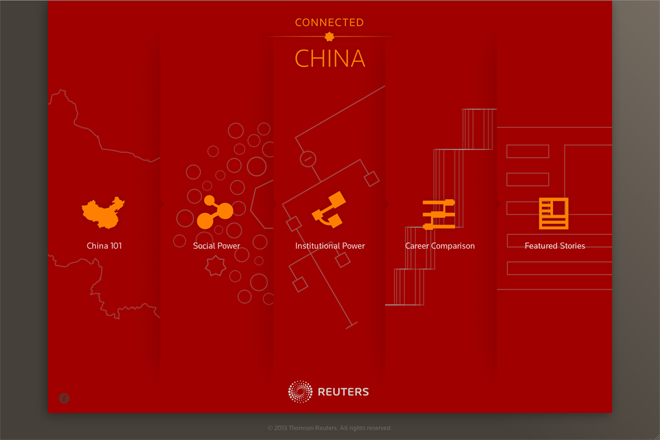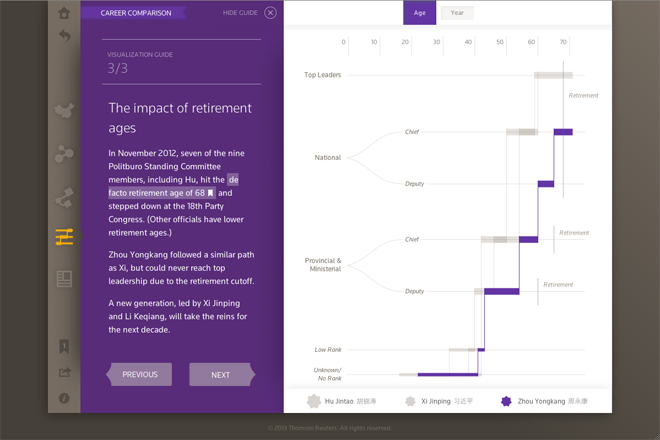China is a big country, both geographically and demographically. It can also be rather opaque and difficult for an outsider to understand. So this recent work from Reuters is amazing because it makes China a bit more transparent while illustrating just how the political system structures power and personnel appointments.

Truthfully, there is more content there than ought to be consolidated into a single blog post here. Briefly, the project was some 18 months in development and hits upon three key areas: Social Power, Institutional Power, and Career Comparisons. Two other sections, China 101 and Featured Stories, offer additional material to help the user understand China’s past and what is going on in the present.

Social Power examines, primarily through the use of network diagrams, the social dynamics of the upper echelons of the Chinese leadership. Previous generations of Chinese political leaders saw power confined into the hands of a few, e.g. Mao Tse-tung, but in recent years the Chinese Communist Power has decentralised that power into several individuals. Many of those individuals have friendships, marriages, and business relationships that have advanced them and kept them in power. The interactivity allows the user to dive deep into these relationships. And should things becoming confusing, here and throughout the app, there are links to biographies, definitions, and guides to explain what is before the user.

Institutional Power roughly compares to a look at the American system of checks and balances. The responsibility of governing China falls to three “branches”: the Communist Party, the Chinese government, and the People’s Liberation Army (under which the navy and air force fall, e.g. the People’s Liberation Army Navy). This section of the app lists who belongs to each post or group and how that post or group falls into the broader structure of the Party, Government, or PLA.

The Career Comparison shows the different—but not really—tracks taken by the leaders of China. The user can compare individuals both present and past, along with potential future players, to see their route to power. China’s political system, because of its arguably undemocratic nature, is different from that of the United States. The path to power is longer and more established in China, as this section clearly shows.
As aforementioned the app was designed over 18 months and was optimised for the iPad 2+ and modern browsers (especially Chrome and Safari). All in all, a stellar piece of work. Design and development credits go to Fathom Interactive Design. The credits listed in the About section are as follows:
EDITOR+PROJECT LEADER: Irene Jay Liu
PRODUCTION HEADS: Yolanda Ma, Malik Yusuf
LEAD WRITER: Chris Ip
COPY EDITOR: John Newland
DESIGN+DEV: Fathom Information Design
